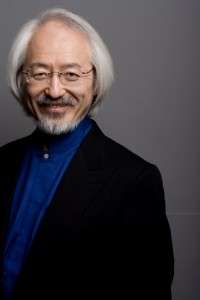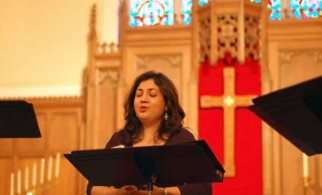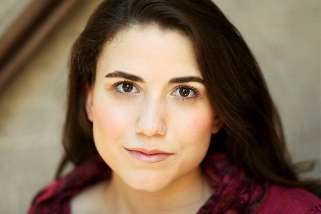|
Back
Bach Variations: The First Concert New York
Avery Fisher Hall, Lincoln Center
03/06/2013 - & March 7, 8, 9, 2013
Johann Sebastian Bach: Motet No. 1, "Singet dem Herrn ein neues Lied", BWV 225 – Magnificat in D Major, BWV 243
Felix Mendelssohn: Magnificat in D Major – Christus, Opus 97
Sherezade Panthaki, Joélle Harvey (Sopranos), Jestyn Davies (Countertenor), Nicholas Phan (Tenor), Tyler Duncan (Baritone)
Carter Brey (Cello), Fora Baltacigil (Double bass), Kim Laskowski (Bassoon), Masato Suzuki (Organ), Bach Collegium Japan, Yale Schola Cantorum, New York Philharmonic Orchestra, Masaaki Suzuki (Conductor)

M. Suzuki (© Marco Borggreve)
So the New York Philharmonic is beginning a month of “Bach Variations”? Hardly impressive! Especially realizing that J.S. himself had to turn out–every week!!– motets, cantatas, masses, concerti, sonatas, fantasias and partitas, in between rehearsing, teaching, performing, and fathering a dozen-odd children.
Still, for an orchestra which doesn’t specialize in Baroque music, using modern instruments (save possibly a C Major trumpet for the Magnificat last night), the New York Philharmonic offered at least two major surprises. As well as the appearance one of the most venerated Bach conductors of our day.
Both Masaaki Suzuki and Ton Koopman look far different than their most stolid favorite composer would suggest. They both are highly energetic, zesty, exciting and enthusiastic conductors. Maestro Suzuki himself last night, with his Einsteinian ivory white hair offered a figure of bright vitality, giving Bach a new lift.
Still, the opening movement of a Bach motet ("Sing Unto the Lord a New Song") sounded strange indeed, almost blurred, even with his own Bach Collegium Japan. Perhaps it was because most of us are used to a Bach motet being played a capella and an abbreviated New York Philharmonic including strings and winds, accompanied the singers. The explanation was a musicological one: Mr. Suzuki’s research had shown that Bach himself might have used an orchestra to accompany his singers.
That was perhaps true, but it’s like discovering that the pristine white Parthenon in Athens was originally painted in garish reds and greens. Especially with this first movement, which has the choral complexity of toccata and fugue in a single movement, with the simultaneous orchestra. Following that, the chorus was followed with solo instruments, and it led to a more translucent and illuminated texture before the familiar chorale.
The concert continued were two unfamiliar pieces by Felix Mendelssohn, who didn’t actually re-discover Bach for a later generation–both Mozart and Beethoven revered the composer–but he was the first to actually program and perform his works in public, 80 years after his death.
In fact, Mendelssohn’s Magnificat had choral lines which could have been written in Baroque times. The second movement, "Quia respexit" for soprano and women’s chorus, had the same floating beauty as Bach’s "Suscepit Israel" of the earlier Magnificat.

S. Panthaki (© www.sherezadepanthaki.com)
Even more important, it displayed a voice of almost unearthly beauty by the beautifully named Sherezade Panthaki. For the first few notes, I was a bit disconcerted by its almost detached notes, but then I realized that this was a religious work, and she was singing as though in a grand church.
Still, Mendelssohn’s Magnificat, for all its flashing confident music, was written when the composer was a mere 13 years old. (For his bar mitzvah speech?) And it was plainly derivative.
Mendelssohn’s Christus, one of his final compositions, was anything but derivative, and tragically gave an indication of the greatness he would have achieved had he lived longer than 38. This was a work of drama, barely 21 minutes showing the trial of Jesus, his divinity, with passion and anger. While the breath of Bach and Handel might have been in the score, it had the excited attitude (without the length) of Elijah. In fact, the structure, basically one tenor doing recitatives (the fine Nicholas Phan) and the chorus playing the parts of jury and worshipers, was a work which must be played far more frequently. Like the Magnificat, these were New York Philharmonic premieres.
The finale was the most familiar work, Bach’s Magnificat, which possibly had the Philharmonic trumpets playing Bach C Major instruments. At least the brazen high notes had that cathedral-like sound. As did both choral groups, from Japan and the Yale Schola Cantorum.

J. Harvey (© Arielle Doreson)
Joélle Harvey was the second soprano here, a woman of wonderful operatic qualities. She lacked the unusual ethereal qualities of Ms Panthaki, but in the trio of the two sopranos and counter-tenor Jestyn Davies, it was certainly beautiful. Was this, though, another Suzuki innovation? I had always remembered the "Quia respexit" as for women’s chorus. The solos, though, gave it a leaner, perhaps even more compassionate feeling for the words showing God taking Israel under His protection.
Mr. Suzuki, it goes without saying, never once let either soloists, orchestra or choruses down, with the last reprise of the first movement a glorious end to the start of the month-long Bach festival.
Harry Rolnick
|